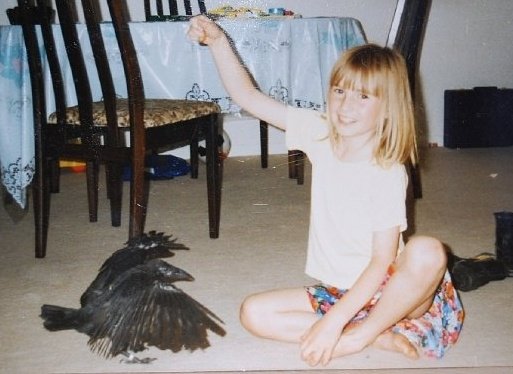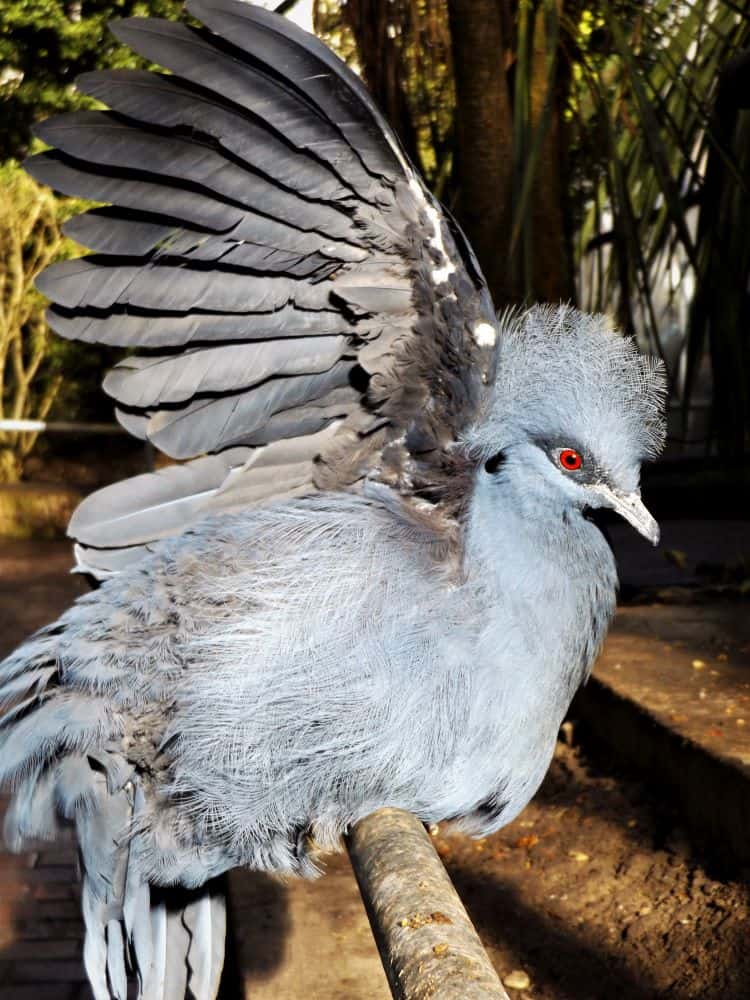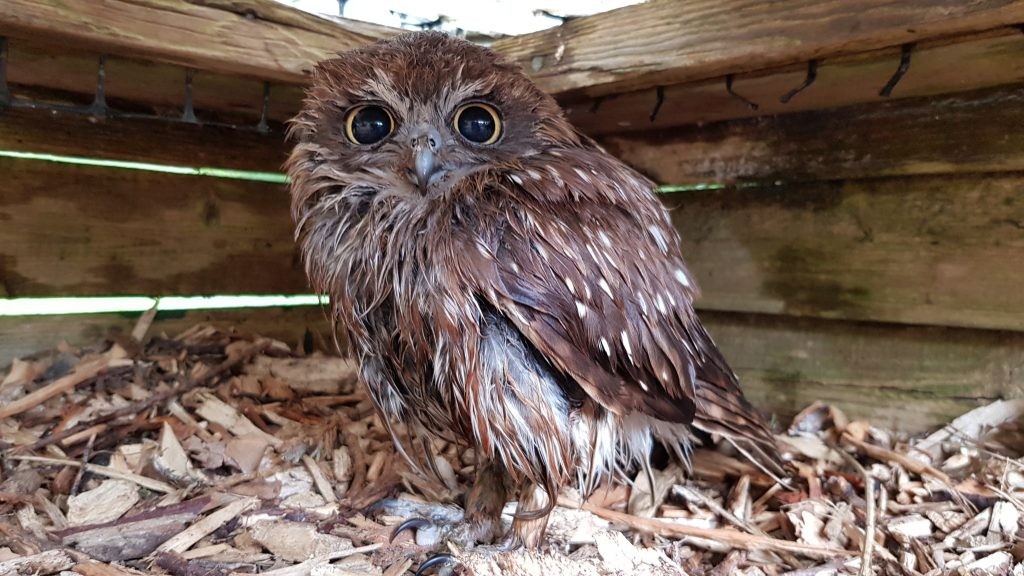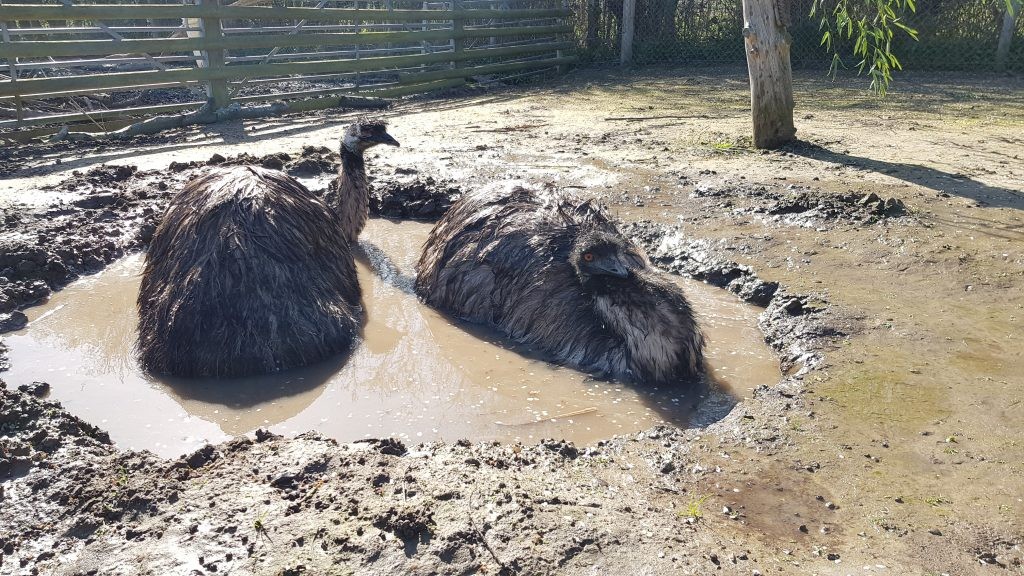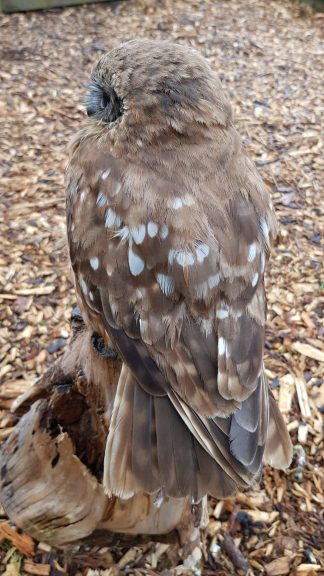Anting
My blog this week was inspired by a video I watched recently of a Song Thrush seemingly hopping about and being attacked by an army of ants! In fact there is much more going on here than meets the eye. Many birds seem to actively seek out high densities of ants and carry out bathing behaviours amongst them. They seem to delight in the ant’s natural reaction to defend themselves. This behaviour is called “Anting” and it is something that has fascinated me since I was a child.
You can watch the video here: http://www.facebook.com/SpeysideWildlife/videos/390992708210894/
I think I definitely get my love of animals from my mum, as we grew up nursing injured wildlife (usually crows!) back to health. I spent a lot of time watching the bird’s recovery and their antics in the garden. I never really understood why they would get so excited about finding an ant hill and then straight away plonk themselves on top of it, laying there for ages with the ants crawling all over their body. I now know that this behaviour may actually help birds to keep their feathers in good condition. There are many ways birds achieve this, and this will be the main focus of my blog this week.
So why do birds ant? To be honest we aren’t really sure why they do it! It must serve a fairly important role though as more than 200 species of bird are known to ant.
I used to think that the ants were carrying off small fragments, but it seems to actually be some form of self-anointing behaviour. One theory is that as the ants attack they secrete formic acid which could reduce parasites such as mites, or even help keep fungi or bacteria in check. The birds mentioned above passively sit in an area with lots of ants to achieve the desired effect, but some actively pick up insects with their bills and rub them over their body.
Another theory is that the insects may not be edible without first discharging the harmful chemicals onto their feathers, then making them safe to consume.
But why do birds go through so much effort to treat their feathers in this way? Feathers are unique to birds and are vital to their survival. These lifesaving structures have many roles including keeping the bird warm and waterproof, to use for display or camouflage, and of course they give birds the ability to fly.
Preening
One thing you may have noticed that birds do a lot is preen. Birds spend hours each day preening, which is a grooming action where they comb their bill through their feathers. This behaviour arranges the feathers into the perfect position for efficient waterproofing, insulation and flight. If a bird’s feathers are not in good condition, this will impede a bird’s ability to stay warm and fly. So feather care is extremely important to all birds, and they dedicate a lot of time to it!
Our colony of Humboldt Penguins is one of the best examples at the park to see preening in action. They dedicate a vast amount of time to meticulously combing through each and every tiny feather. The penguins, like many birds, have an uropygial gland at the base of their tail which secretes oil. This oil helps keep feathers in good condition and helps with waterproofing. The penguins can’t reach all of their feathers with their bill, so they use their flippers to transfer the preening gland oil from their bill to the hard to reach places like the back of their head, and even use their feet to scratch and spread the oil around even further. Hurricane the Humboldt Penguin preening his feathers after a dip in the pool
As well as preening, birds can also stretch or ruffle up their feathers to realign their plumage. Stretching also helps to provide gaps of air between each feather, making each feather easier to preen and aiding insulation. I’m always impressed with how birds with long bills manage to preen. It’s amusing watching our pelicans try to reach each feather with a beak that looks quite awkward to control! Between the sessions of preening you can see him fluff up his feathers to shake them all back into place.
Of course you can always rope a friend into helping you preen those hard to reach places. You scratch my back and I’ll scratch yours? We often see our birds preening each other, especially species that rely on one another to raise young. You can see this form of social grooming throughout the animal kingdom.
Keeping a clean, healthy appearance could help birds attract a mate but is also a form of communication between mates. A courtship ritual that involves mutual preening is called Allopreening and helps create and maintain a strong bond between a breeding pair of birds.
Some species like Owls, Pigeons, Amazon Parrots and Hawks have a reduced uropygial gland, or lack of one all together. Instead, some species have developed specialized powder down feathers which disintegrate into powdery substance and thought to have the same function as preen oil. Birds that produce powder down are less likely to bathe or immerse themselves in water and do not require the stronger waterproofing that preen oil provides.
Birds often use water to preen! Probably the most obvious way you would think a bird could have a wash is to take a bath. Many birds will bathe in water before a preening session, splashing around to soak their entire plumage. This also plays an important role in feather preservation. Bathing again helps to removes dust, dirt, and possibly parasites from feathers before then preening to place each feather into its correct arrangement.
The penguins are very vigorous when they have a wash, using their flippers to beat water over them. Some birds are not as graceful as others however… I adore watching our Emus plunge into their wallow. Nothing better on a hot day I guess than a nice muddy puddle!
Another way to give feathers a good wash is to have a shower! We get a lot of rain here in the UK, and rain or shine we have to be out in it to do our rounds and look after the animals. So when everyone is looking a bit wet and miserable, and most of the animals are sensibly sheltering away from the downpour, I turn my attention to the birds. They seem to be the only ones actually enjoying the rain! In heavy rain the Parrots dance around with their wings outstretched and even hang upside down to allow the water to reach the areas that haven’t quite had a good enough soaking.
Birds often posture when showering so drops of water are directed in the right direction. This is very common with smaller birds and may help them to conserve energy when it’s cold by directing water off them as they point their body bill down away from the rain. Sometimes it doesn’t rain here for a while and so we can provide the birds with a welcome shower too. Especially enjoyable on a hot afternoon!
Dust Baths
Amazingly some birds rely on dust to keep themselves clean. It never really made sense to me that kicking mud all over oneself could help with cleanliness! But lots of birds actively seek out really dusty patches of mud or sand to bath in. The dust is thought to help absorb excess preen oil so feathers are not too heavily coated, ready for reapplication. Regular dusting could also help smother lice, feather mites, and dislodge other parasites. Birds often use dust baths more during hot seasons or in dry habitats where water can be scarce, and some do not bath in water at all. Many will use both types of bathing. The wild House Sparrows that have made their homes here can often be seen dust bathing on the paths around the Park and having a dip in our animals’ enclosures.
And just because it is one of my favourite things to watch in the world here is another video of one of our elusive quails having a dust bath too…
One last way a bird can care for their feathers is to sunbathe. Birds often sit in a patch of sunshine with their wings outspread and bellies or backs exposed to the rays of light. Sunning is thought to make the oil from the preen glad more liquid and easier to spread. It could also help to control body parasites by forcing these pests to different areas which are easier to remove.
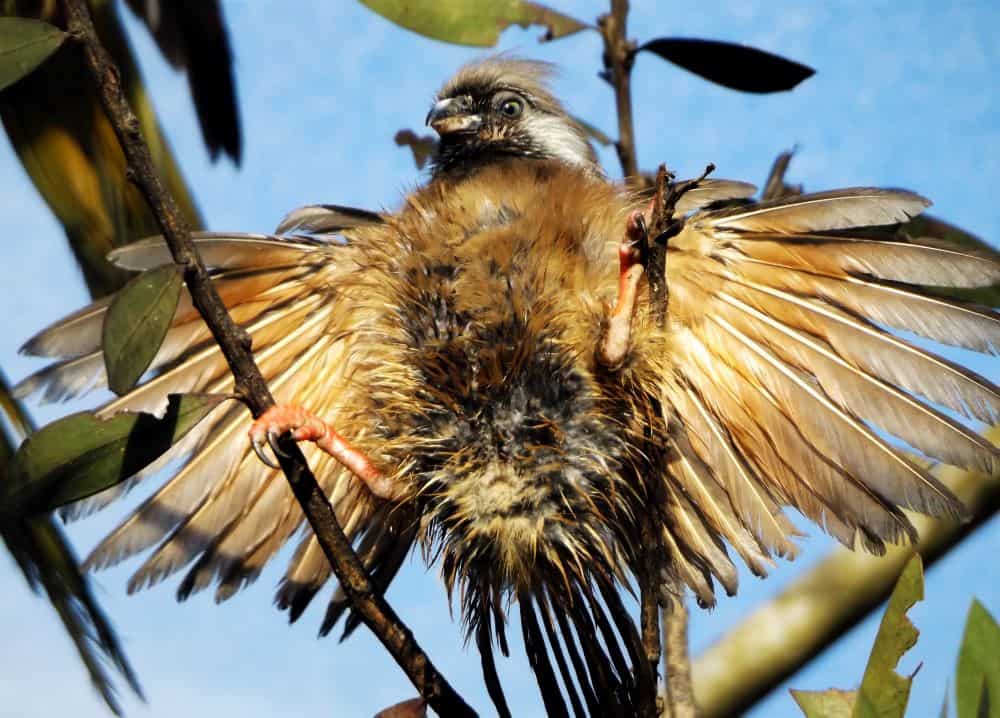
Moulting
Despite all of this care eventually the bird’s feathers do wear out. Birds overcome this problem by moulting. In the picture below you can see Timmy’s older worn and torn feathers that are a year old compared to the darker brand new feathers that have grown through. Moulting is a complex but necessary part of avian life, but I think I’ll save that one for a future blog 😉
Please come and visit all of your favourite birds at Wingham Wildlife Park soon and if you have any pictures or videos of our birds having a good brush up, we’d love to see them!
